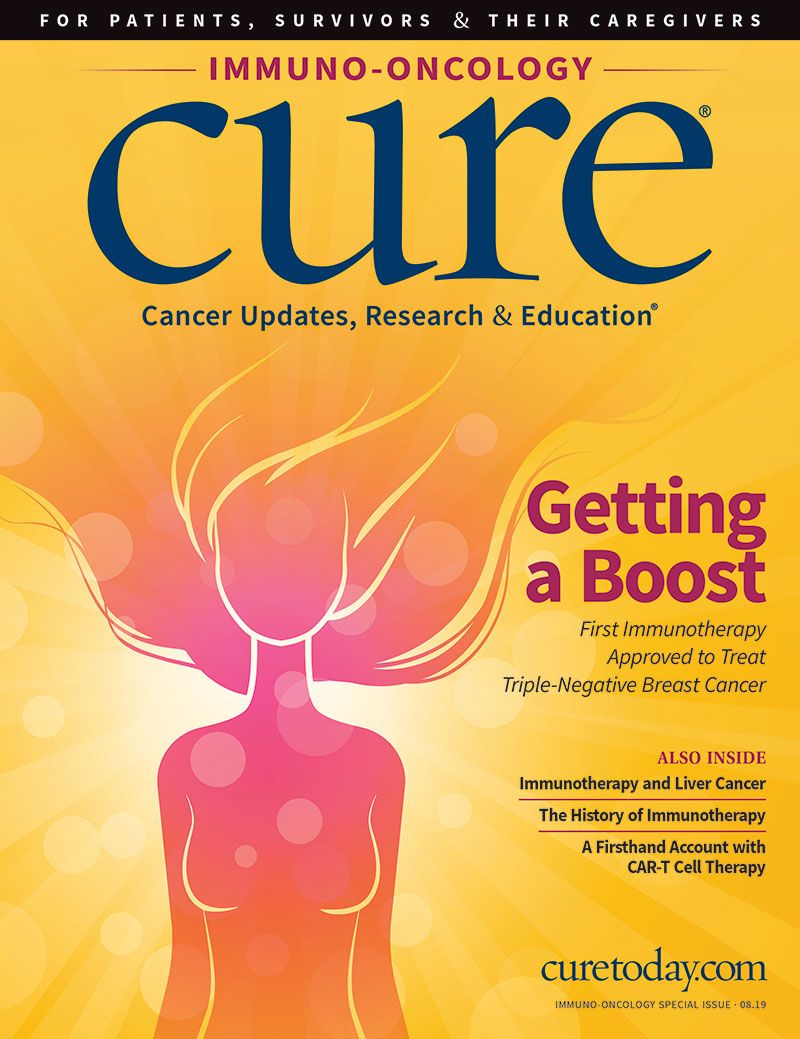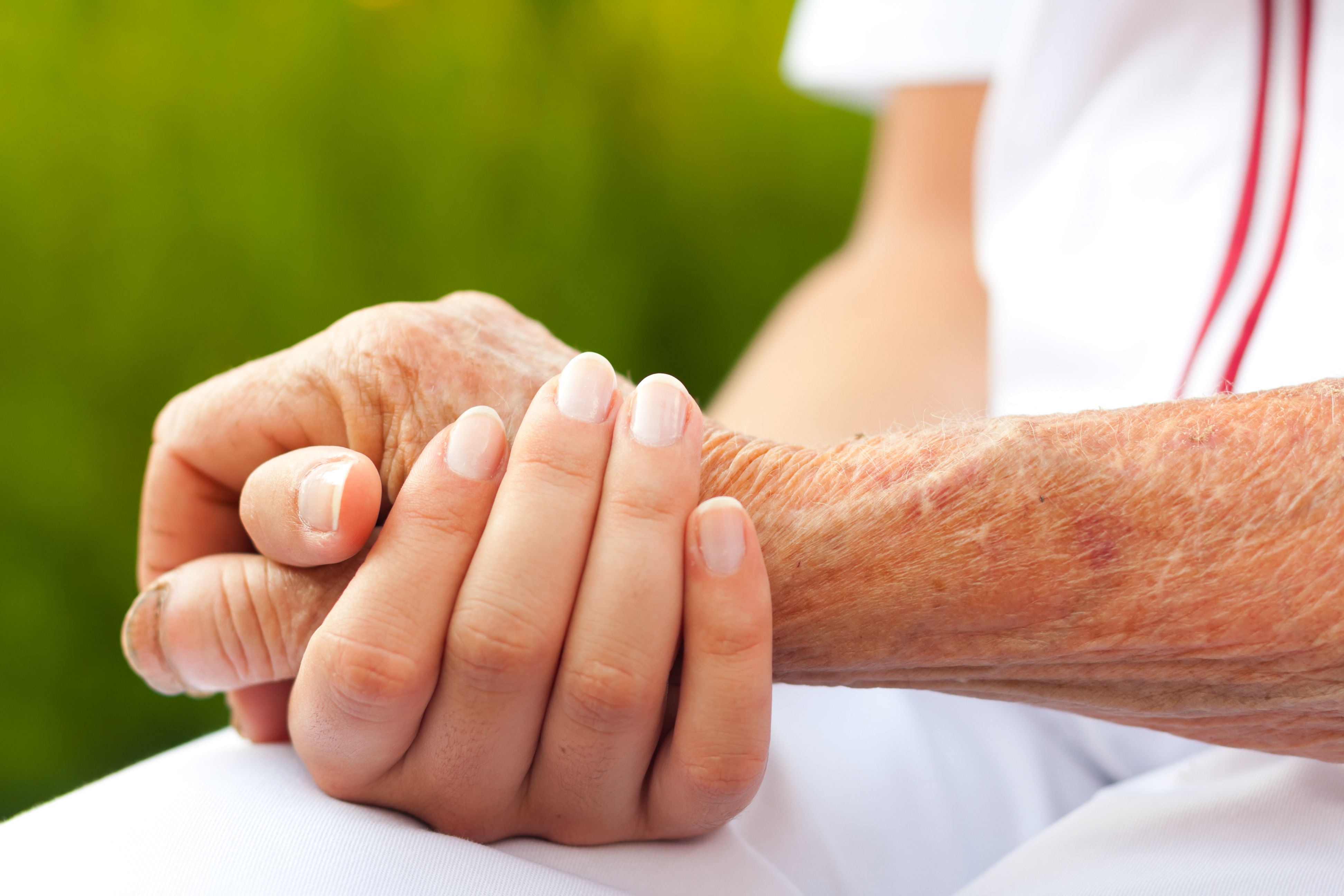Publication
Article
Walking in His Shoes
Author(s):
A man who received chimeric antigen receptor-T cell therapy shares his firsthand account.
In February 2014, Jeffrey Backer was visiting his daughter in New York and noticed that he couldn’t keep up with her as they were walking. As an emergency room physician for more than 30 years, he chalked it up to a possible flu. After returning home, he began to experience night sweats, coughing and a low-grade fever. Backer decided to get checked and underwent a CT scan. “I received a phone call from the radiologist who said, ‘Listen, Jeff, your CT looks bad. You either have an aggressive lymphoma or testicular cancer,’” Backer recalled. “I mean, wow — flip a coin.”
Backer received a diagnosis of diffuse large B-cell lymphoma (DLBCL). It is the most common type of non-Hodgkin lymphoma, which affects nearly 75,000 people — mostly men — in the United States each year.
Despite multiple rounds of chemotherapy and a stem cell transplant, Backer’s disease kept relapsing. Then he participated in a clinical trial involving chimeric antigen receptor (CAR)-T cell therapy, which has left him cancer-free for almost three years. With this type of immunotherapy, a patient’s T cells are removed, altered in a lab and then reinfused in the hope that they will attack cancer cells.
Dr. Frederick L. Locke, a medical oncologist at Moffitt Cancer Center in Tampa, Florida, is co-lead investigator of the pivotal ZUMA-1 trial, which led to the Food and Drug Administration (FDA) approval of the second available CAR-T cell therapy, Yescarta (axicabtagene ciloleucel). During the National Comprehensive Cancer Network 2019 Annual Conference, Locke, Backer and Alix Beaupierre, a transplant nurse coordinator, took a 360-degree look at CAR-T cell therapy.
LIMITED OPTIONS
Outcomes in refractory aggressive non-Hodgkin lymphoma are poor, Locke explained. Patients are often treated upfront with combination chemotherapy, as Backer was. He initially went on a chemotherapy regimen commonly known as R-CHOP — Rituxan (rituximab), cyclophospha- mide, Adriamycin (doxorubicin), Oncovin (vincris- tine) and prednisone. He achieved a complete remission and went back to work.
“We can cure up to about 60% of patients with initial chemotherapy, and that’s pretty remarkable,” Locke said. “Unfortunately, 40% of patients either don’t respond to chemotherapy or progress.”
Backer was among that 40%. He relapsed about a year later and started on a new chemotherapy regimen with a planned autologous stem cell transplant, which would involve removing his own stem cells and later putting them back into his body to help fight the cancer. This treatment plan cures only about 5% of patients, Locke said. Prior to CAR-T cell therapy, more chemotherapy would have been next.
In the United States, two CAR-T therapies are available to patients with certain types of cancer. The first, Kymriah (tisagenlecleucel), was approved in August 2017 for patients up to 25 years old who have acute lymphoblastic leukemia that relapsed or did not go into remission with other treatments. Two months later, the FDA approved Yescarta to treat adult patients with certain types of large B-cell lymphoma who have not responded to or relapsed after at least two other kinds of treatment.
In patients with DLBCL, durable responses — the length of time that a partial or complete response is observed because of treatment — have been seen in 40% of patients who received CAR-T cell therapy. “We think we can cure about 15% of people,” Locke said. “We need these patients referred and referred early.”
A ‘NUCLEAR BOMB’
Backer first read about CAR-T cell therapy on clinicaltrials.gov, an online registry of all clinical trials that anyone can access to see what might be enrolling participants. “I’m the type of person who needs a plan A and a plan B,” Backer said. “I received a plan A, but the plan B in the case of the transplant failing was not encouraging.”
He reached out to Moffitt Cancer Center — Tampa is not far from where he lived in Orlando, Florida — to see if he was eligible. He wasn’t. In December 2015, Backer went ahead with the stem cell transplant. A few months later, he again relapsed with growths all over his body — but this made his participation in the ZUMA-1 clinical trial possible. “Being a participant in a clinical trial is scary and daunting at the same time,” he said. “I remember sitting there with the transplant coordinator and they handed me a 27-page consent form, and I could barely read page one. I just wanted to sign. I was ready to sign anything right then and there.”
Although potentially curative, CAR-T cell therapy is not without risk. Patients can develop two serious side effects. Cytokine release syndrome, caused by a large, rapid release of cytokines (small proteins important in cell signaling) into the blood from immune cells affected by the immunotherapy, can be life-threatening. Neurological events, such as confusion, tremor and seizures, can also occur.
Despite lengthy discussions with his medical team at Moffitt and reading the consent form, Backer said, he wasn’t fully prepared for the coming side effects and recovery when he went forward with CAR-T therapy in June 2016. “That’s when the nuclear bomb set off,” he said. Within 12 hours of receiving the infusion, he experienced severe chills, violent shaking and a high fever, and also felt certain he was experiencing side effects that were affecting his brain.
About two days after Backer received the reinfused T cells, the infectious disease team rushed him in for a CT scan. They found no infection and no signs of the cancer.
“For me, it was a miracle treatment,” Backer said.
Locke has been following patients enrolled in ZUMA-1 for more than two years and said that half are still alive.
BEING PREPARED
Backer admitted that going in with a full understanding of CAR-T cell therapy would have made the experience dramatically different.
After seeing patients and their loved ones in distress, care providers at Moffitt Cancer Center learned to smooth the process, Beaupierre said. For instance, the 27-page document has been broken down into one-page educational handouts and shorter consent forms. The team also created a flow sheet and that grew to a detailed patient calendar. All CAR-T therapy recipients also now have a dedicated nurse and social worker.
In addition to those resources, Backer said, peer-to-peer support would be helpful.
As CAR-T cell therapy continues to evolve and be explored in the treatment of other cancer types, experts are learning more about how it works and how to improve the process.
For Backer, quality of life has changed a bit. Initially, he received blood and platelet transfusions every two weeks for several months following CAR-T cell therapy. Although he is back to work full time, he runs the risk of being exposed to other diseases and viruses. “It’s always at the back of my mind,” he said. “I wear a mask and goggles at work but still get sick.”
He spends his free time hiking and fishing and feels blessed to still be alive. “It worked out for me, and here we are 33 months into this thing,” Backer said.




